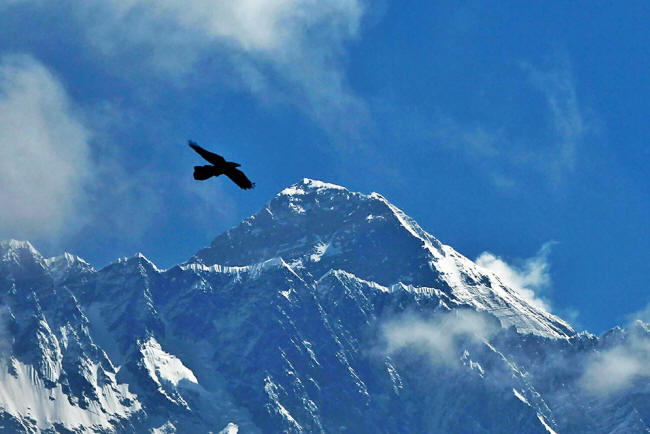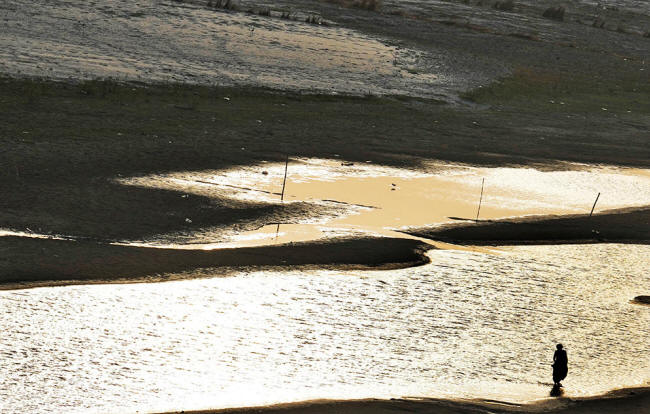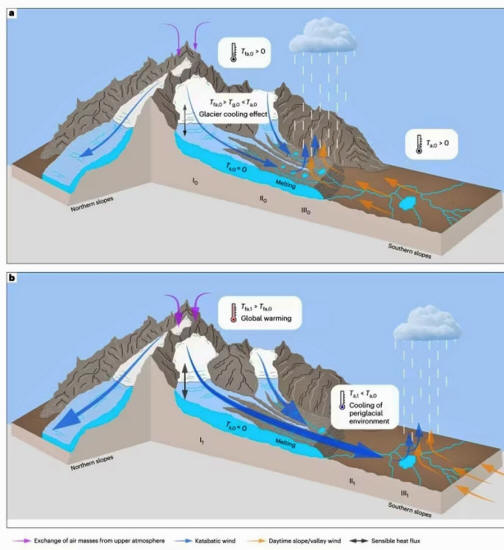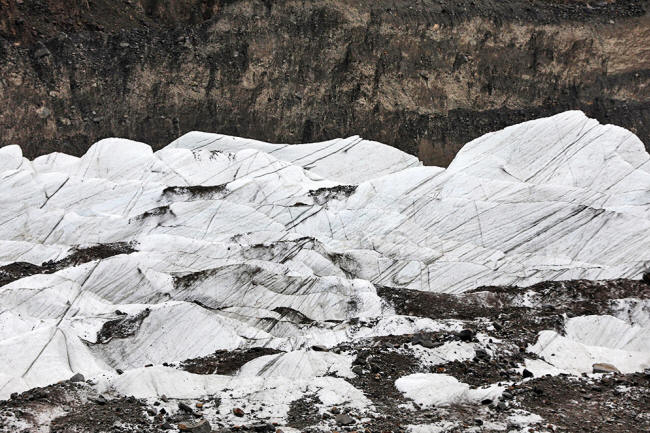|

by Caitlin Rawling
December 14,
2023
from
ABC Website

The research could change
how
peri glacial environments are studied.
(File
photo).
(AP:
Niranjan Shrestha)
Himalayan glaciers have been rapidly melting and are predicted to
continue to do so.
However a report has
found the glaciers have been cooling due to cold winds going
down the mountain slopes...
In a new report (Local
Cooling and Drying induced by Himalayan Glaciers under Global
Warming) published on
Nature Geoscience, researchers
have found downslope winds have been helping cool the glaciers.
Over the past
few decades, Himalayan glaciers have
shrunk significantly
as global temperatures continue to rise.
The report
states that Himalayan glaciers provide a crucial source of water
to over a billion people in South Asia.

The melting of the Himalayan glaciers
threatens
the water security of over one billion people.
(AP: Rajesh Kumar Singh)
The shrinking of the
glaciers has contributed to water uncertainty within region and is
predicted to continue doing so throughout the 21st
century.
Although the glaciers are expected to continue to melt as global
temperatures 'rise', the report shows that,
Himalayan glaciers
have somehow counter-intuitively been cooling and drying in
recent decades...
According to the report,
researchers have found enhanced downslope winds known scientifically
as
katabatic winds,
are behind why the
glaciers have been cooling and drying...
What are
Katabatic winds?
Katabatic winds are downhill winds that are generated when
the surface of a mountain is cooler than the adjacent atmosphere,
which creates a pressure gradient.
Himalayan glaciers rely on rain from,
Winds from the monsoon
season are drawn upwards in the daytime and are met with the
katabatic winds, the study shows.

A diagram of a cloud raining onto a mountain range
with
blue and purple arrows pointing down.
These diagrams show the katabatic winds
are
cooling the glaciers.
(Supplied: Nature Geoscience)
The research shows the convergence between the upward monsoonal
winds and the downhill winds causes the monsoonal moisture to be
lifted, generating a decent amount of rain, snow, sleet or hail over
the glaciers.
Increase in katabatic winds may have implications
According to the report the escalation of katabatic winds in recent
decades still has consequences.
The first consequence is that daytime temperatures over the
glaciers have decreased. This is because of the pumping down of cold
air from higher altitudes.
The decrease in daytime temperatures has the tendency to reduce the
melting of glaciers, contradicting the observed loss of glacier
mass.
The second consequence of the enhanced katabatic winds is to
drive the convergence line between upslope and downslope winds
further down the mountain.
This means that precipitation has increased at lower elevations, but
decreased at the higher elevations where glaciers are situated.
The decrease in precipitation over the glaciers has caused them to
lose mass over the past few decades.
New peri
glacial study model
According to the study, it shows this could be developed into,
a new type of model
of how the local climate in peri glacial environments responds
to global warming.
The study also suggests
the warming of the atmosphere can intensify the katabatic winds,
which blocks the flow of moisture from lower elevations.
This is because high altitudes contain so little moisture, which
means the glaciers are dependent on the upslope flow of moisture
from the low altitudes.
As the Himalayan glaciers have significantly shrunk, it is likely
that they are particularly vulnerable to this effect.
The model of how peri glacial environments respond to global
warming can not be used on all glaciers though.

Large chunks of ice
amongst
pieces of gravel.
The Passu glacier in the Karakoram mountain
has
gained mass.
(Reuters: Akhtar Soomro)
According to the research, the
Karakoram mountain range has
gained glacier mass over recent decades.
The glaciers in Karakoram depend on the rain, sleet or snow from the
winter, meaning this particular model would not apply.
Therefore the particular model that could be developed from the
study, is likely to only apply to glaciers that are dependent on the
rain, sleet or snow during the summer period.
|





